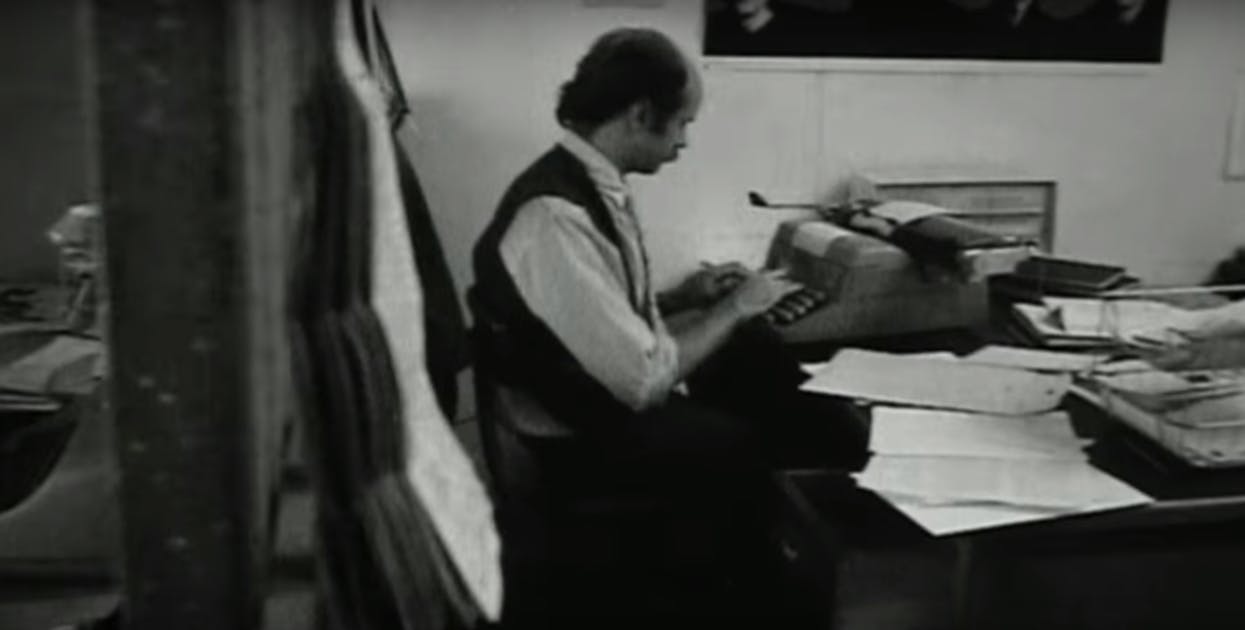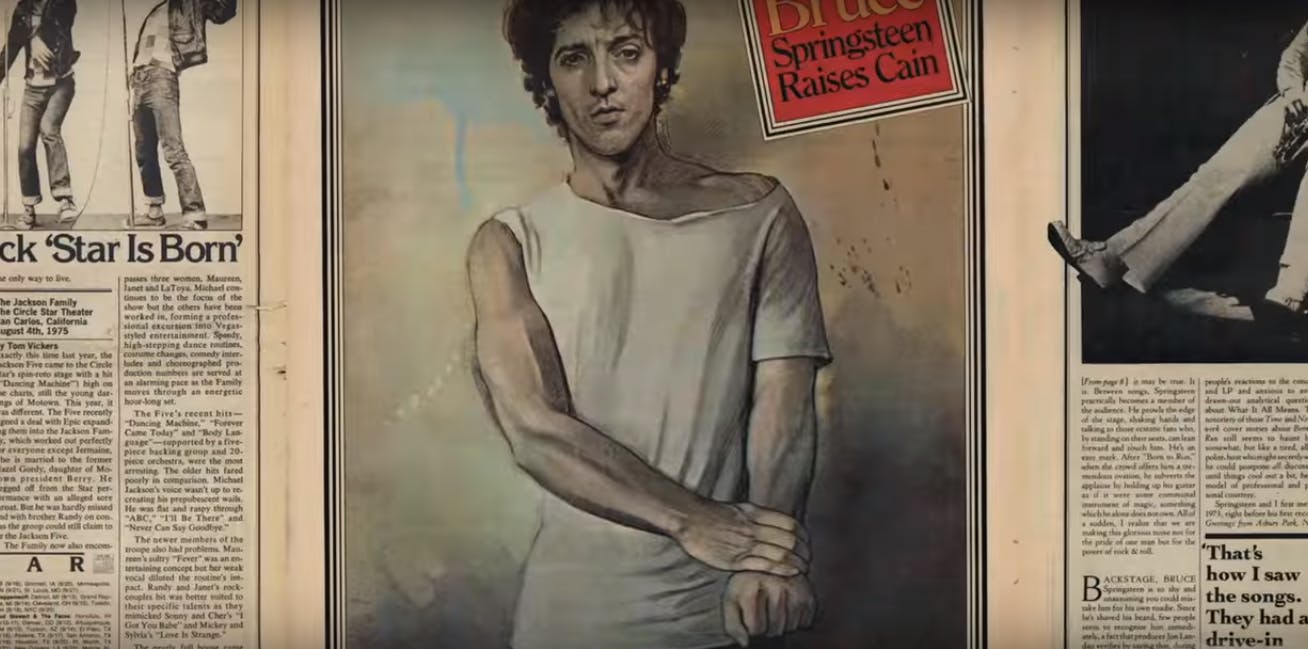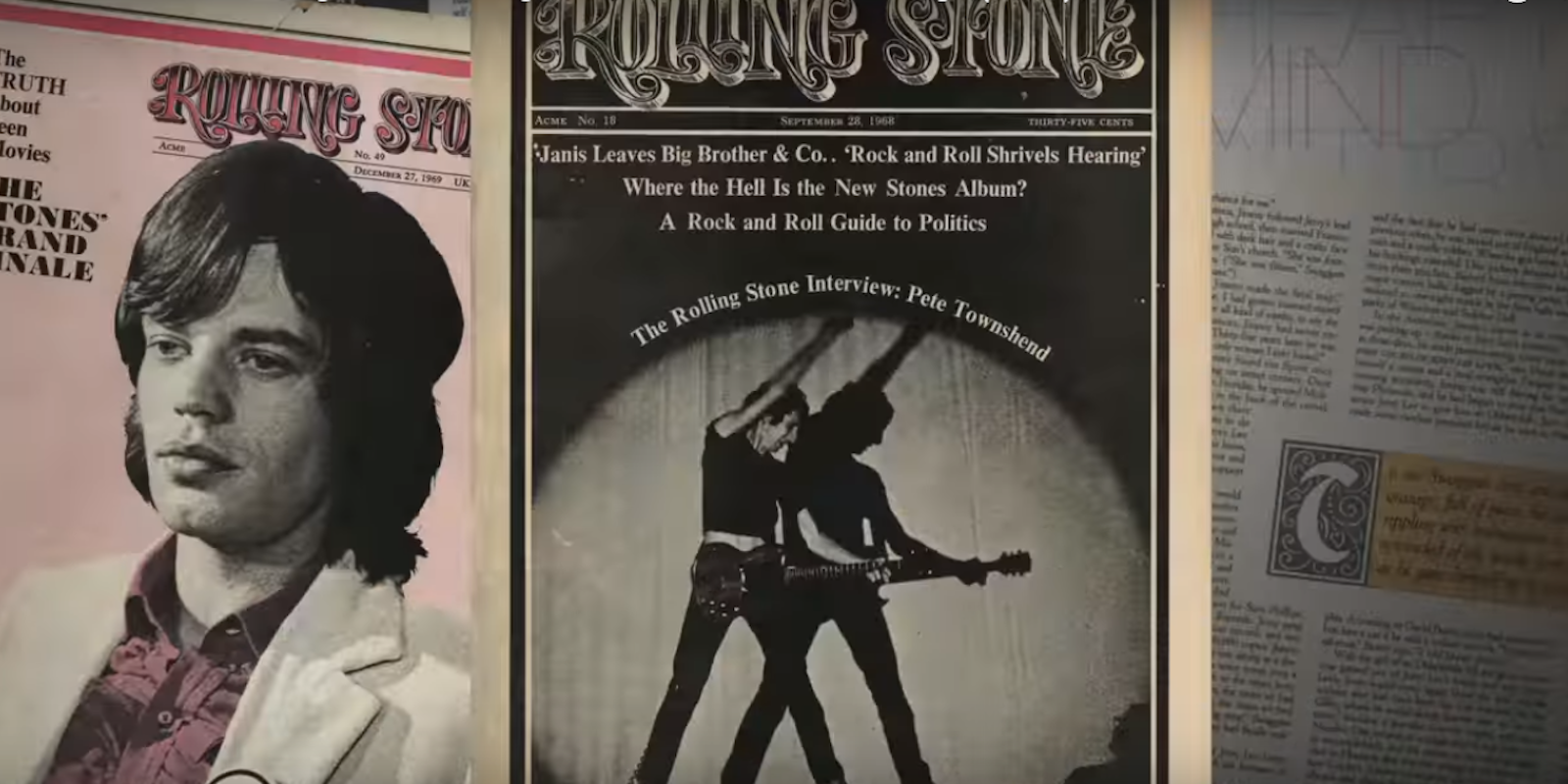HBO’s Rolling Stone: Stories From the Edge is for me. It’s for the classic rock obsessive, the catalog completist, and the person who still has the Dark Side of the Moon T-shirt they bought from Hot Topic. It’s for the kind of person who splurged allowance on Rolling Stone special editions and read over the magazine’s “500 Greatest Albums of All Time” like scripture. It’s for the person who debated Rock & Roll Hall of Fame inductees with anyone unfortunate enough to listen. It’s for the 14-year-old bent on believing they were born in the wrong time, to the wrong generation, and can only dream of taking their rightful place in the back of a smoke-filled FIllmore West in 1970.
In other words, the four-part documentary is for the most annoying kid in the world.
For everyone else, Stories From the Edge will be inseparable from the all-too-familiar canonized beats of the story of rock and roll. Its two-hour episodes are filled to the lid with archived footage and celebrity readings of features on Tina Turner, John Lennon, and Bruce Springsteen. Its anecdotes are told by crinkled journalists flushed with memories of casual celebrity meetups and filth-covered punk clubs. This era is a fun land to visit from time to time. But from Tom Brokaw to Forrest Gump to VH1 Classic, this kind of baby boomer vanity might be too familiar to a generation raised not to argue against it.
Stories From the Edge comes at an auspicious time for rock and roll, print publishing, and Rolling Stone itself. For one, rock is dead. The idea of a reigning genre is dead, really. Music is kept diverse by a digital market that can take a no-name like Cardi B and turn her into an overnight success. Apps like Spotify have cut down the fencing that publications like Rolling Stone worked hard to put up.
And, in many ways, good riddance. The story of rock and roll is one of theft and appropriation, of misogyny and rape culture. The Rolling Stones and the Beatles ruled the world with hooks and attitude they stole from Little Richard and James Brown. Led Zeppelin is still paying off royalties to the aggrieved families of foundational blues legends to this day. The most visible women in the first two episodes of Stories From the Edge are groupies. The series dances around this while never confronting Rolling Stone’s own role in forming the rock canon that excludes the work and influence of women and people of color.

More than music, however, founder Jann Wenner always saw Rolling Stone as a revolutionary political voice, an intersection of music and the world it hopes to change. Stories From the Edge celebrates this, pulling out Johnny Depp’s Fear and Loathing In Las Vegas voice to read Hunter S. Thompson’s campaign coverage from 1972. It breathlessly tells the tale of Patty Hearst’s kidnapping and subsequent membership in the radical revolutionaries of the Symbionese Liberation Army—a story Rolling Stone originally broke.
Much of this work centered on Wenner’s notion of the magazine as important to the heart of youth culture, both what kids were hearing and what kids were thinking. Indeed, it’s hard not to hear the way Wenner talks about the political wing of his publication in the work of Elaine Welteroth, the mastermind behind the reinvention of Teen Vogue. Like Rolling Stone in the 1970s, Teen Vogue proudly boasts of its ability to place fashion and celebrity half a page away from intersectional feminist viewpoints on gun control, trans rights, and Black Lives Matter. Teen Vogue is guiding young people in defying expectations and challenging the status quo by doing so itself—and without all the hegemonic baggage Rolling Stone could never quite shake.
Of course, that was what Rolling Stone did then. Like many old vanguards of the media world, Rolling Stone is on the edge of implosion and up for sale. It’s a familiar story—a flagging readership abandons newsroom-style coverage for the pace and immediacy of digital—but the coming death of the magazine hangs over this documentary like a pall. Having albeit only seen two episodes, Stories From the Edge is a look back with little plan to move forward. It’s not a profile—it’s an obituary.
And one written while the corpse is still moving. Wenner is proud of what he built, but he’s proud generally. He’s plainly the ringleader of this rock and roll circus and Stories From the Edge gives a very clean, uncomplicated portrait of a complicated man. Perhaps the closest corollary for Wenner is in Lorne Michaels, another brutish curator of talent and culture. But even Michaels let SNL take a few swings in his direction for the sake of humility.
Wenner is putting his full distrust of criticism on full display just as this documentary airs. In concert with Stories From the Edge is Sticky Fingers, the authorized biography of Wenner penned by Joe Hagan. According to reports, Wenner disagreed with Hagan’s complex portrait of the famed editor’s sexuality, drug use, and frequent spats with family members and celebrities. Wenner himself complained about the comparison of Wenner to Donald Trump and celebrity culture overall shortly before calling Sticky Fingers “bullshit.”
In a move fittingly symbolic, Wenner pushed Hagan out of a pre-planned appearance by the two on the stage of the 92nd Street Y, only to replace him with Alex Gibney—the director of Stories From the Edge.

Sticky Fingers is still hitting shelves, and early reviews paint the biography as a blistering takedown of Wenner by someone given untold access. In contrast, Stories From the Edge is tightly controlled and plainly represents the story Wenner would prefer you hear. It’s hard to blame Gibney for this. The difference between the Wenner we meet in the HBO series and the Wenner in the pages of Sticky Fingers is clearly space created by Wenner himself.
It’s fitting for the founder of the publication that has done more than any other to solidify the way we view rock and roll, and pop music more generally, to want to create a similar lack of space in the story about himself. The reign of the Beatles, the revolution of San Francisco, the birth of cool at the CBGB. These are epochs fostered by Rolling Stone with the clean chapter breaks of a textbook, and Stories From the Edge does as little to challenge them as it does to challenge Wenner.
Stories From The Edge is enjoyable if you care to get lost in the pageantry of how we have always been told to view American culture since 1969. The archival footage is rich and there’s a solid focus on some of the magazine’s best writing which, depending on the take, was often among the best journalism of its time. Rolling Stone definitively altered the tone of the media landscape, even if it did little to diversify it.
Rolling Stone opened up the notion of what a publication could be, but long ago abandoned the mantel of “cultural force.” What was once an indispensable voice is now a missable footnote. For all but the most devoted classic rock fan, Stories From The Edge will feel like a farewell party thrown by someone who long overstayed their welcome.
Still not sure what to watch on HBO? Here are the best movies on HBO, the best HBO documentaries, and what’s new on HBO Go this month.


